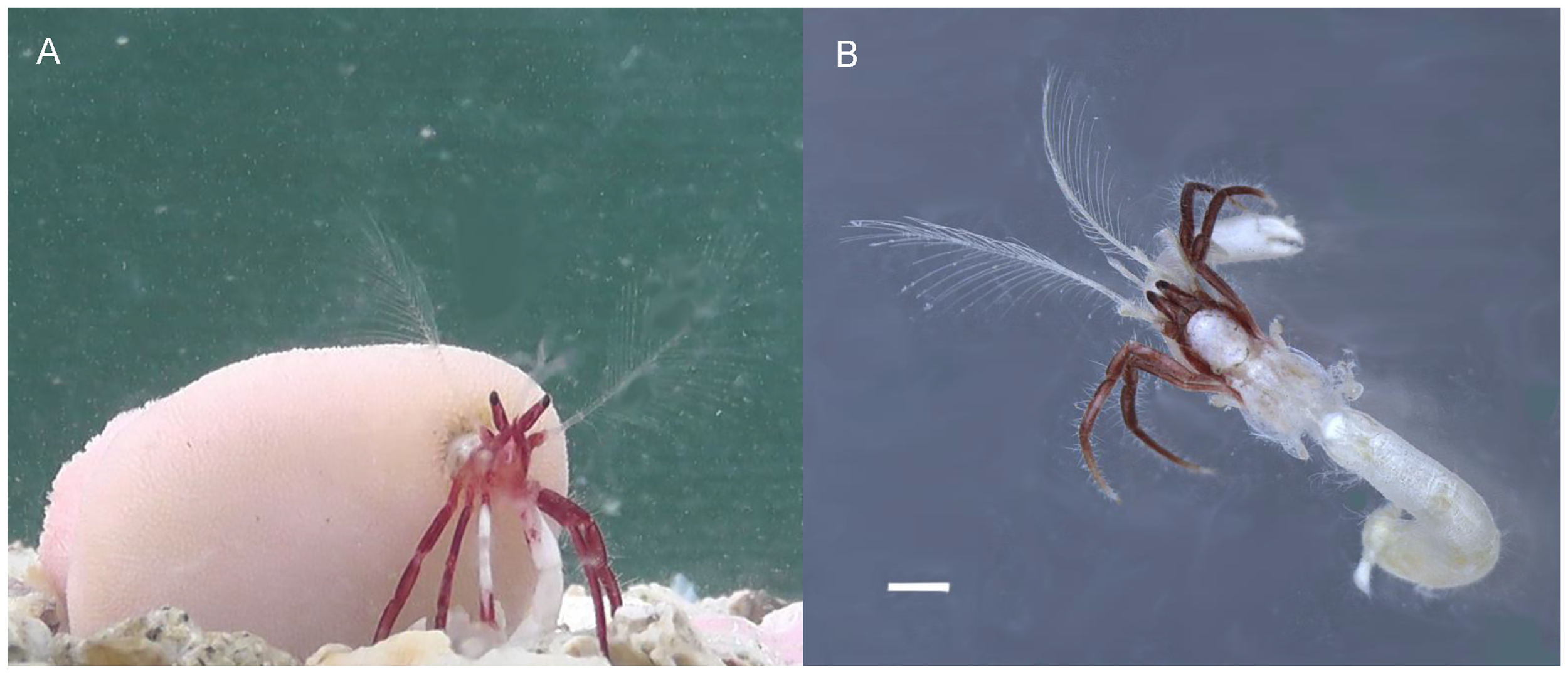The Hermit Crab With the Cool, Modern, Expandable Home
No shell-swapping for this newly described species—their coral homes grow with them.

Hermit crabs are so much more than just shells with legs sticking out of them. To begin with, some of them have a lot of personality: 40-year-old Jonathan Livingston Crab, for instance, follows his owner around, hangs out at her feet, and waits for her at the front door. And they bravely face vulnerable moments in the dangerous sea, when they transfer from one shell to another as they grow. A newly described species of hermit crab, found in the shallows of the Amami Islands, north of Okinawa, is done with this process of shifting from one shell to the next. Instead, it resides in living coral, which grows with it. No upsizing required—just pure crustacean real estate bliss.
Diogenes heteropsammicola is not the first known species of hermit crab that uses an expandable home. A South African crab discovered in 2013 lives in a soft mass of gooey sand and extendable organic matter, made up of colonies of sea anemones. But only this tiny, gangly new cousin is known to live within coral this way. The coral homes themselves have a somewhat retro-futuristic aesthetic—great pinkish domes that resemble a designer lamp. The hermit crabs seem to be into their modern architecture. They’re house-proud, and meticulously brush stray detritus away.

But although they may be new to us, these hermit crabs have been living symbiotically with coral for a very long time. The crab’s long, thin tail and spindly arms are well suited to fitting into the coral’s cavity, which is usually inhabited by a marine worm that also shares a symbiotic relationship with the coral. Hermit crab hind ends usually spiral to fit shells, but these crabs are more symmetrical, to fit well in the coral. There are advantages for the coral, too. In the journal article, published in PLOS ONE, researchers describe how the crab “carries the host coral and prevents the coral from being buried.”
See? Not just a shell with legs sticking out of it.






























Follow us on Twitter to get the latest on the world's hidden wonders.
Like us on Facebook to get the latest on the world's hidden wonders.
Follow us on Twitter Like us on Facebook